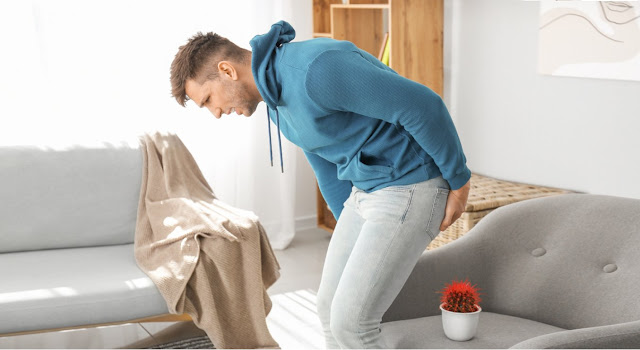Everything you need to know about piles
Piles is another term for hemorrhoids. Hemorrhoids are swollen veins in the lower anus and rectum. This swelling can cause localized inflammation of other tissues.
Many people suffer from piles, although the symptoms are not always visible. Hemorrhoids produce obvious symptoms in at least 50% of adults over the age of 50 in the United States.This article will look at piles, their causes, how to identify, classify, and treat them, as well as the impact they may have on the body.
What are piles?
Piles are the result of swollen veins in the lower anus and rectum. They can cause tissue growths in and around the anus and can lead to significant discomfort. These growths can vary in size and location.
Internal vs. external
Internal piles form within the rectum and are typically not noticeable on an external inspection. In certain situations, however, an external pile may form and extend from the anus. Prolapsed haemorrhoid is the medical word for this.Internal piles are graded on a four-point scale by medical practitioners.
- Grade I: The growth does not cause symptoms and does not protrude out of the anus.
- Grade II: The piles may prolapse from the anus but return inside independently.
- Grade III: The piles prolapse and only recede within the anus with manual intervention.
- Grade IV: The piles prolapse outside of the anus and a person cannot push them back in.
Symptoms
In most cases, the symptoms of piles are not serious and resolve on their own.An individual with piles may experience the following symptoms:
- painful lumps in and around the anus
- itching and discomfort around the anus
- discomfort during and after passing stools
- bloody stools
- excessive anal bleeding, possibly leading to anemia
- infection
- fecal incontinence
- anal fistula
- strangulated hemorrhoid, in which anal muscles cut off blood supply to the hemorrhoid
However, many people with piles may not experience any symptoms.
When to contact a doctor
A person should seek medical assistance if their piles persist for more than one weekTrusted Source of home treatment or if they experience consistent bleeding from their rectum.Causes
Piles result from increased pressure in the lower rectum.The blood vessels around the anus and the rectum will stretch under pressure and may swell or bulge, forming piles. This may be due to:
- chronic constipation
- chronic diarrhea
- lifting heavy weights
- straining when passing a stool
Risk factors
Certain factors may increase a person’s risk of developing piles, including:- Pregnancy: Up to 50%Trusted Source of people experience hemorrhoids during pregnancy. This is due to increased pressure on the pelvis, a person having a higher blood volume, and a higher incidence of constipation.
- Age: Piles are more common in older adults. Around halfTrusted Source of people over the age of 50 develop piles.
- Weight: Research suggests that being overweight may increaseTrusted Source a person’s chance of developing piles.
- Diet: Eating a diet low in fiber may increase the likelihoodTrusted Source of a person having piles.
Diagnosis
A doctor can usually diagnose piles after carrying out a physical examination. They will examine the anus of the person with suspected piles.The doctor may ask the following questions:
- Do any close relatives have piles?
- Has there been any blood or mucus in the stools?
- Has there been any recent weight loss?
- Have bowel movements changed recently?
- What color are the stools?
For internal piles, the doctor may perform a digital rectal examination (DRE) or use a proctoscope. A proctoscope is a hollow tube fitted with a light. It allows the doctor to see the anal canal up close. They can take a small tissue sample from inside the rectum for analysis.
The physician may recommend a colonoscopy if the person with piles presents signs and symptoms that suggest another digestive system disease, or they are demonstrating any risk factors for colorectal cancer.
Treatments
In most cases, piles resolve on their own without the need for any treatment. However, some treatments can help significantly reduce the discomfort and itching that many people experience with piles.Lifestyle changes
A doctor will initially recommend some lifestyle changes to manage piles.Piles can occur due to straining during bowel movements. Excessive straining is the result of constipation. A change in diet can help keep the stools regular and soft. This involves eating more fiber, such as fruit and vegetables, or primarily eating bran-based breakfast cereals.
A doctor may also advise the person with piles to increase their water consumption. Losing weight may help reduce the incidence and severity of piles.
To prevent piles, doctors also adviseTrusted Source exercising and avoiding straining to pass stools. Exercising is one of the main therapies for piles.
Medications
Several medicinal options are available to make symptoms more manageable for an individual with piles:- Pain relievers: Over-the-counter pain relievers such as aspirin and ibuprofen can reduce discomfort.
- Stool softeners: Stool softeners and laxatives can make passing stools easier, which can reduce pain from piles.
- Corticosteroids: Corticosteroid creams and ointment can reduce inflammation, pain, and itching.
Surgical options
If a person has severe prolapsed piles or internal piles that are bleeding, surgery may be necessary. Surgical procedures for piles include:- Banding: The doctor places an elastic band around the base of the pile, cutting off its blood supply. The hemorrhoid will typically fall off within a weekTrusted Source.
- Sclerotherapy: A doctor will inject medicine into the hemorrhoid to make it shrink and eventually shrivel up. This is effective for grade II and III hemorrhoids and is an alternative to banding.
- Infrared coagulation: During this procedure, a surgeon will use an infrared light device to burn the hemorrhoid tissue.
- Hemorrhoidectomy: This type of surgery involves the total removal of hemorrhoid tissue. It is the most effectiveTrusted Source option for completely removing piles, but there is a risk of complications, including difficulties with passing stools.
- Hemorrhoid stapling: During this procedure, a surgeon will use staples to block blood flow to the hemorrhoid tissue.
Prevention
- People can lower their risk of developing piles with a range of lifestyle alterationsTrusted Source, including:Eating a healthful diet: Staying hydrated and eating a diet rich in high-fiber foods can help keep stools soft and make their passing easier.
- Avoiding straining when passing stools: Straining when passing stools can increase the risk of developing piles.
- Avoiding heavy lifting: Regular heavy lifting is a risk factor for piles. Limiting heavy exertion and practicing proper lifting techniques can help a person prevent the development of piles.
- Maintaining a moderate weight: Being overweight raises the risk of having piles.
- Staying active: Exercise can help food passage through the digestive system and make stools more regular. This can reduce the risk of piles.




Comments
Post a Comment